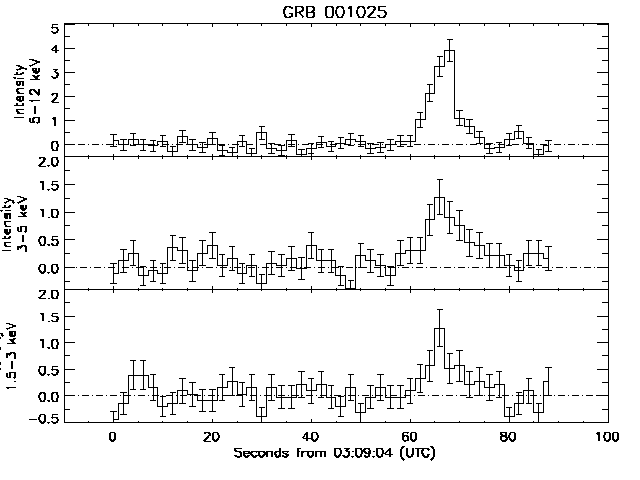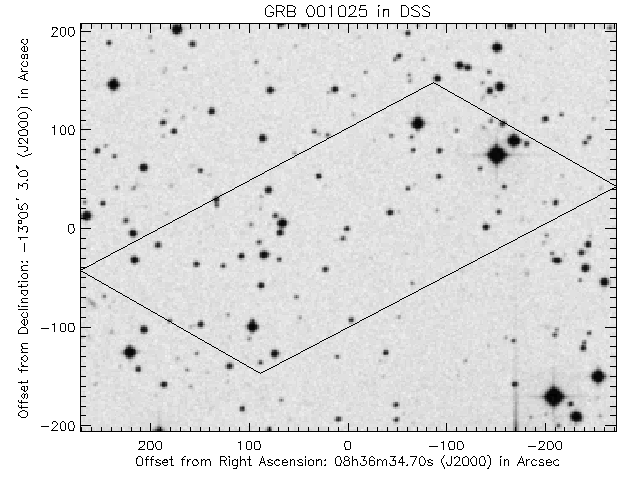The ASM has detected a new gamma-ray
burst. The
event began at about 03:10:05 UTC on 25 Oct 2000. It appears to
be singly-peaked and to have lasted around 15 seconds. It was
detected in a single camera. Here is the background-subtracted light
curve, in Crab flux units.
 From the position histogram data, an error box could be derived that is 1.6 degrees long and 4.0 arcminutes wide. There are no sources in the ASM catalog near this localization. The center of the error box is at R.A. = 8h38m, Decl. = -13o16'.0 (J2000.0).
The corners of this box are:
 NEAR also observed the burst. As observed by NEAR, in the energy range >~100 keV, and with 1 s resolution, the burst consisted of a single one second long spike followed by weak emission for ~5 seconds. The dark blue lines in the above figure represent an annulus derived from a very coarse comparison of the arrival times at NEAR and RXTE. This estimated IPN annulus is 100 arcminutes wide, and contains the ASM error box. It confirms but does not improve upon the ASM position. As reported in GRN Circ. 863, Ulysses also observed this burst, and triangulation between Ulysses and NEAR produced a much smaller error box. The green lines show the improved annulus, while the points reported in GRN Circ. 864 are plotted as light blue crosses. The reported points are:
Here is the joint error box superimposed over the DSS image.
This page maintained by Don Smith |
